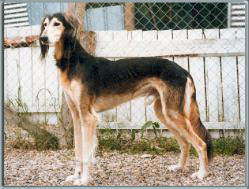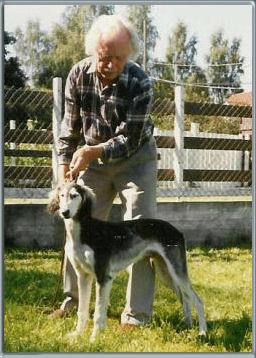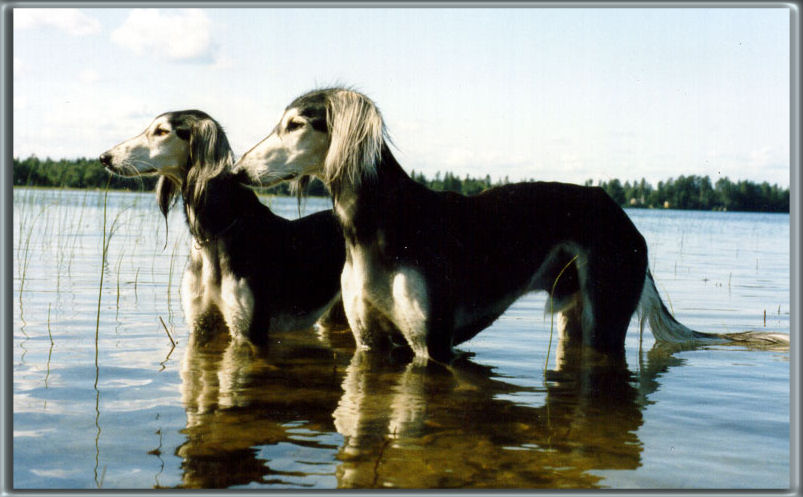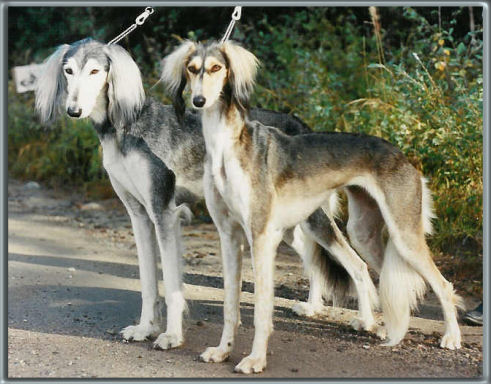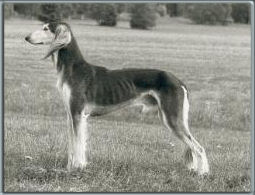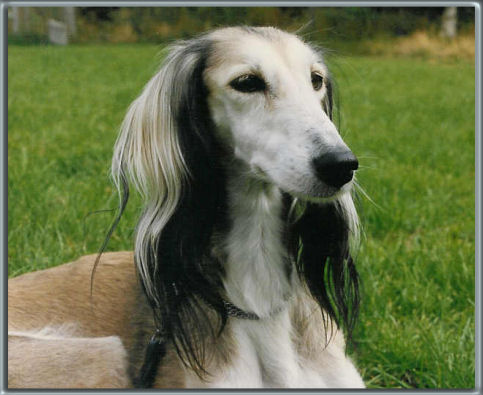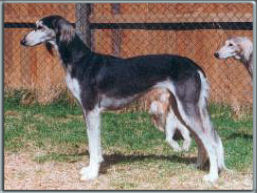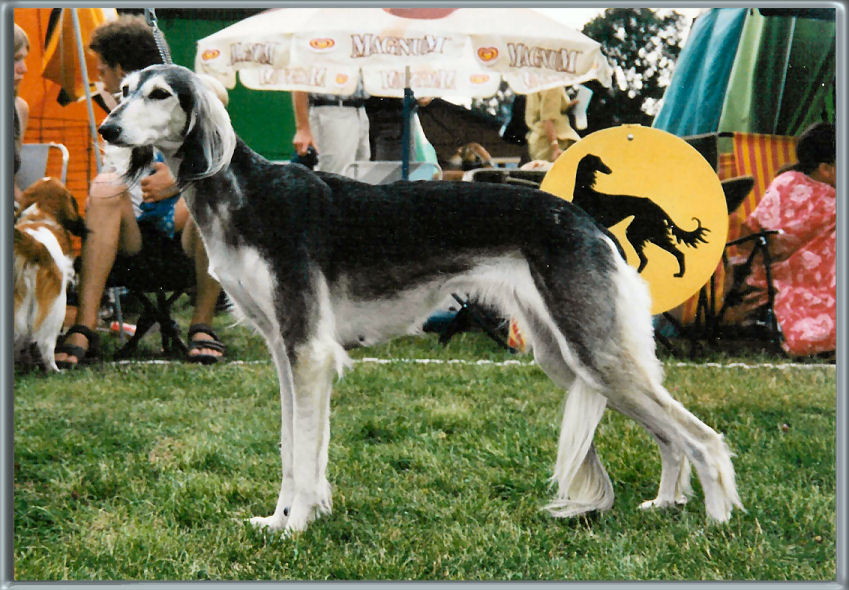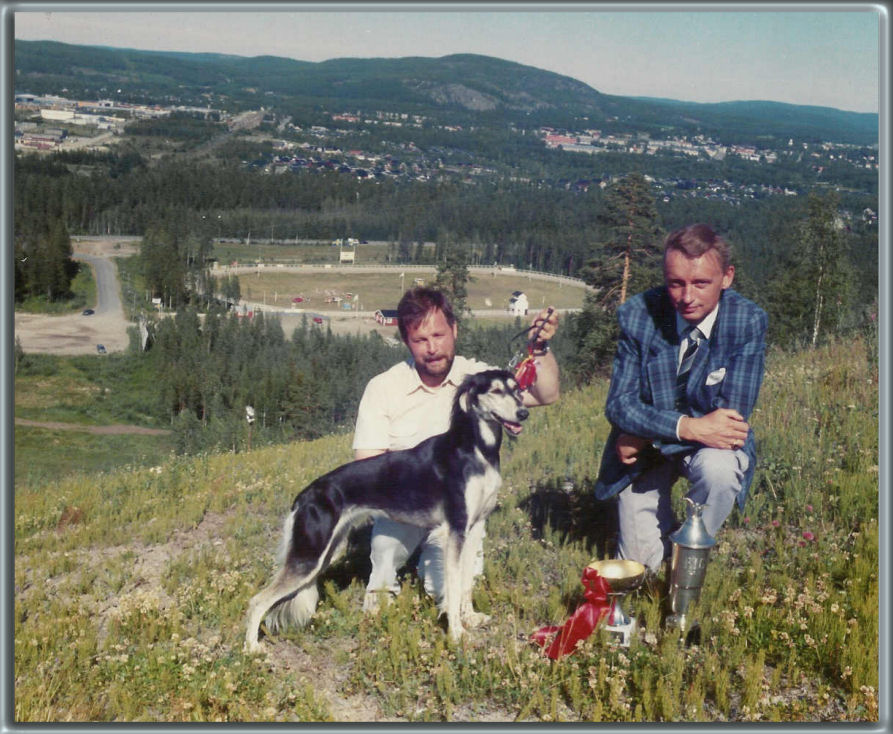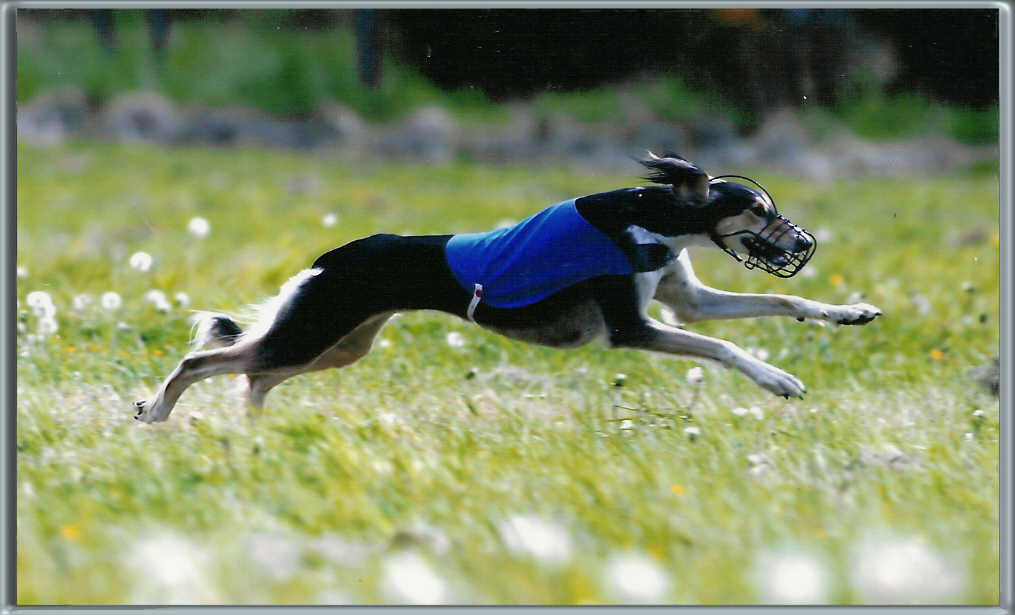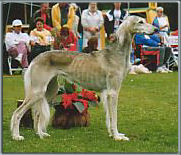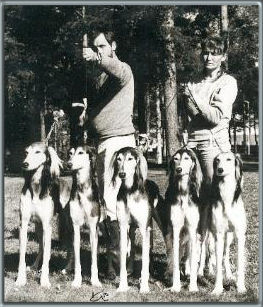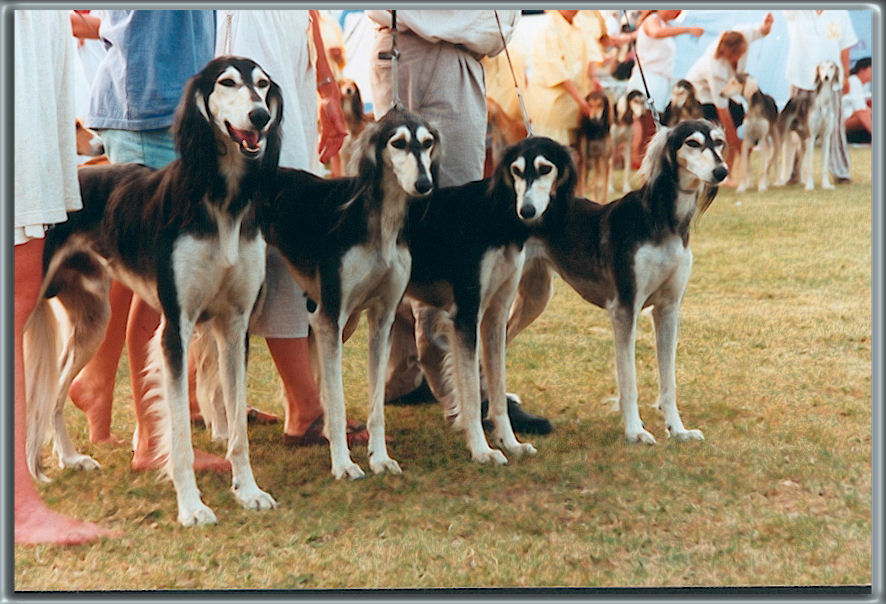Shamali salukis
A breeder interview with Christer Edling
(Salukibladet 2-3/2005)
By Katarina Petersson
Page 1
Salukibladet congratulates Kennel Shamali and Christer Edling for having received the Hamilton Award and on account of that we will here present the kennel. Kennel Shamali was started by Christer together with his former wife Inger Sjoestroem, but after their divorce Christer alone has represented Shamali. Apart from the Hamilton Award, Christer have also received SKK:s Order of Merit, which can be read about in this magazine. Kennel Shamali is situated about 20 km north of Umea and here Christer and Inger also operated Tjalens dog-boarding house for many years, where they could accommodate up to 30 dogs during the summer months. Naturally with assistance by the two “kennel girls” that were always around and had that as their “summer job”. At Shamali, the dogs can always go in and out from the house to the large, fenced-in garden and as a dog buyer one have always been welcome in for a cup of tea. In the summer there was always tea out on the large terrace with the entire saluki pack around you. The Shamali salukis have always lived and lives together in a pack, every single dog has to know his/her place in the pack for them to be able to live together in harmony. Now to my interview that I made a summer evening…The Hamilton Award is considered the highest distinction a breeder can get so it feels very nice to receive it. The fact that there are only six saluki breeders who has been awarded it through the years makes me appreciate it even more.
How did it come to pass that you became interested in dogs and, in particular, salukis?
I had a general interest in animals as a child and, above all, dogs and horses. The breed that I started with was Groenendael, a Belgian shepherd dog. When I met Inger she owned a Labrador, but nourished a dream about owning a saluki. I was not familiar with the breed but its history intrigued me. I have always been very interested in history and the salukis’ background fascinated me immediately. Inger drove to Boden 1974 and bought “Ceiba”, S Ch Khalil’s Ceiba, from Birgitta Strandborg.
The next saluki came 1975 as company to Ceiba, “Daisy”, or Tarana, a red bitch that came from a bloodline with racing dogs. We bought Daisy for racing, and our first two salukis both had racing-licences. We never really got caught up with racing though, so in the end it was exhibitions that became the dominating interest.Racing in that time had started to develop towards price money, something that I was against and there were also other ideas I didn’t share. Naturally, the distances influenced
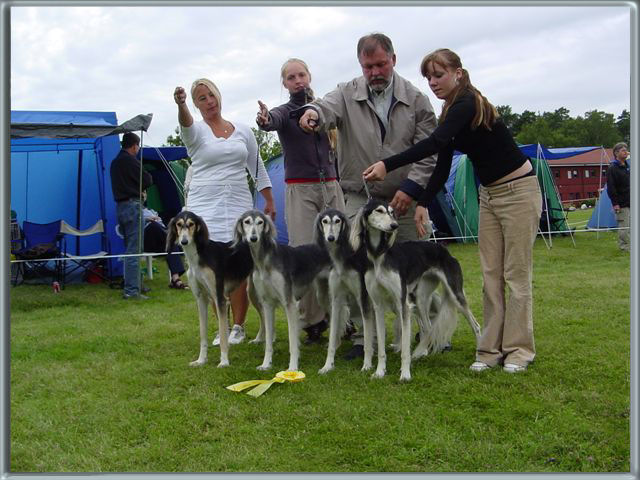
Shamali group from 2005 with Fasqiya, Elishama, Farisa and Gazila
(Photo: F Lindgren)
since the nearest racecourse was in Skelleftea, 130 km away. To Alvsbyn we had about 200 km and to Sundsvall even further. Personally, I think it can be hard to be involved in both racing and showing at a high level due to costs and lack of time.
Why did you start your breeding?
I have always been interested in breeding in general and have had cichlids and later on, sheep. With these interests, it was necessary to study both genetics and ethology (another of my animal-focused hobbies). After starting with salukis my interest in genetics increased. Also, for a few years we had a Connemara mare that we had a foal after, so it was quite natural that breeding started to become more and more interesting. We began looking for a saluki model that we could imagine ourselves to breed. Eventually our eyes were caught by Int & Nord Ch Wenarja’s Wawailah, a very nice and beautiful black grizzled bitch who won quite a bit and was owned by Birgitta Strandborg. We also liked Wawailah’s
